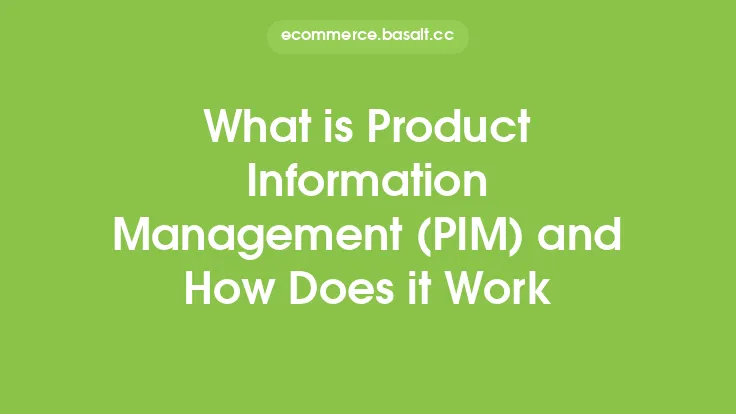In today's fast-paced e-commerce landscape, creating and managing product content is a crucial aspect of any online business. With the rise of omnichannel retailing, companies need to ensure that their product information is accurate, consistent, and engaging across all touchpoints. This is where Product Information Management (PIM) comes into play, streamlining the process of creating, managing, and distributing product content. By leveraging a PIM system, businesses can improve the efficiency and effectiveness of their product content creation, ultimately driving sales, revenue, and customer satisfaction.
Introduction to Streamlining Product Content Creation
Streamlining product content creation with PIM involves centralizing and standardizing product data, making it easier to manage and update. This approach enables businesses to reduce errors, inconsistencies, and redundancies, resulting in higher-quality product content. With a PIM system, companies can automate many tasks, such as data validation, formatting, and translation, freeing up resources for more strategic and creative activities. By streamlining product content creation, businesses can also improve their time-to-market, allowing them to respond quickly to changing market conditions and customer needs.
The Challenges of Product Content Creation
Creating high-quality product content is a complex and time-consuming process, involving multiple stakeholders, systems, and channels. Without a PIM system, businesses often struggle with data silos, inconsistencies, and inaccuracies, which can lead to a poor customer experience and lost sales. Some common challenges include:
- Inconsistent product data across different channels and systems
- Insufficient or inaccurate product information
- Difficulty in managing and updating large volumes of product data
- Limited visibility and control over the product content creation process
- Inefficient use of resources, resulting in delayed time-to-market and increased costs
How PIM Streamlines Product Content Creation
A PIM system streamlines product content creation by providing a centralized platform for managing and distributing product data. This platform enables businesses to:
- Collect, validate, and standardize product data from various sources
- Enrich and enhance product data with additional attributes, descriptions, and media
- Automate data validation, formatting, and translation
- Manage and update product data in real-time, ensuring consistency across all channels
- Integrate with other systems, such as e-commerce platforms, ERP, and CRM, to ensure seamless data exchange
- Provide visibility and control over the product content creation process, enabling businesses to track progress and make data-driven decisions
Best Practices for Streamlining Product Content Creation with PIM
To get the most out of a PIM system, businesses should follow best practices for streamlining product content creation. These include:
- Defining a clear product content strategy and governance model
- Establishing standardized data formats and validation rules
- Implementing automated workflows and data processing
- Providing training and support for users and stakeholders
- Continuously monitoring and evaluating the effectiveness of the PIM system
- Integrating the PIM system with other e-commerce technologies, such as digital asset management and content management systems
The Benefits of Streamlining Product Content Creation with PIM
By streamlining product content creation with PIM, businesses can achieve numerous benefits, including:
- Improved data quality and consistency
- Increased efficiency and productivity
- Enhanced customer experience and engagement
- Faster time-to-market and improved competitiveness
- Better decision-making and strategic planning
- Reduced costs and improved ROI
- Improved collaboration and communication among stakeholders
Real-World Examples of Streamlining Product Content Creation with PIM
Many businesses have successfully streamlined their product content creation using PIM. For example, a leading fashion retailer used a PIM system to centralize and standardize its product data, resulting in a 30% reduction in errors and inconsistencies. Another example is a manufacturer of consumer electronics, which implemented a PIM system to automate its data validation and translation processes, resulting in a 25% reduction in time-to-market.
Future of Streamlining Product Content Creation with PIM
As the e-commerce landscape continues to evolve, the importance of streamlining product content creation with PIM will only continue to grow. With the rise of artificial intelligence, machine learning, and the Internet of Things (IoT), businesses will need to leverage PIM systems to manage and distribute increasingly complex and dynamic product data. By investing in a PIM system and following best practices, businesses can stay ahead of the competition and achieve long-term success in the ever-changing world of e-commerce.





